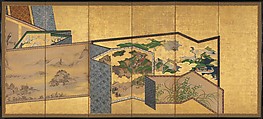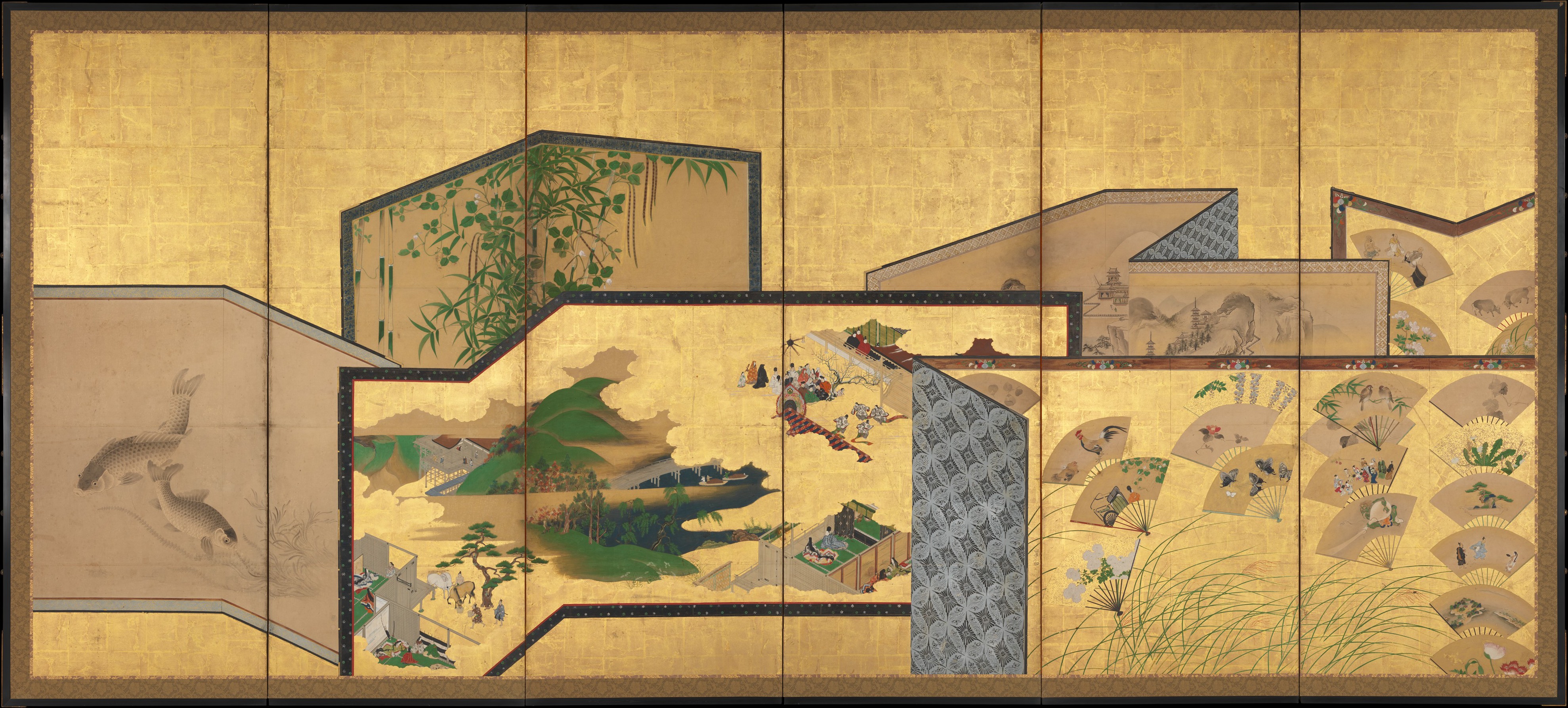Screens within Screens
Not on view
This pair of screens is unusual in its subject matter: the replicas of folding screens painted on the screens themselves offer a fanciful catalogue of workshop styles practiced during the Edo period. They relate to two categories of screens, one known as "Whose Sleeves?" and another called "Thousand Fans." [changed to "Scattered Fans"] Screens of the first type feature representations of variously patterned robes draped over racks; those in the latter category are decorated with fans that have themselves been embellished with pictures or poems. In a nod to the "Thousand Fans" [changed to "Scattered Fans"] format, one of the replica screens seen here features fans decorated with a range of motifs, from vegetables and insects to episodes from courtly narratives. Each compositional type invites playful comparisons between objects that are alike in form but dissimilar in design or execution.
The parade of styles on display here includes those of the Tosa, Unkoku, Rinpa, and even the Hasegawa schools of painting. Judging from the skillfully executed paintings on two of the screens, illustrating scenes from the Tale of Genji, it is likely that the artist trained primarily with a Tosa master. The Tosa School is best known for its colorful miniatures depicting the lives of the courtiers and military men of bygone eras, and it is considered the primary avenue of transmission of the yamato-e style.
On view from August 28, 2021–April 24, 2022
Due to rights restrictions, this image cannot be enlarged, viewed at full screen, or downloaded.
This artwork is meant to be viewed from right to left. Scroll left to view more.



